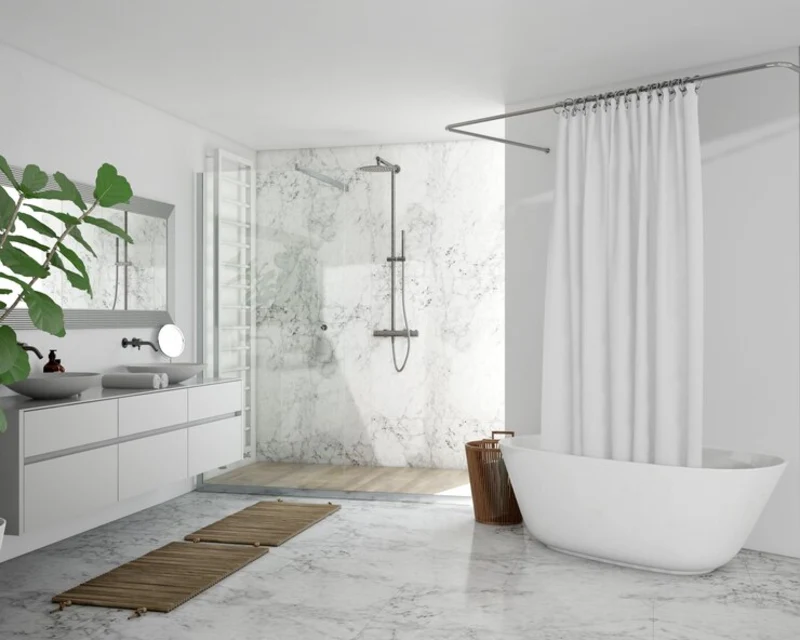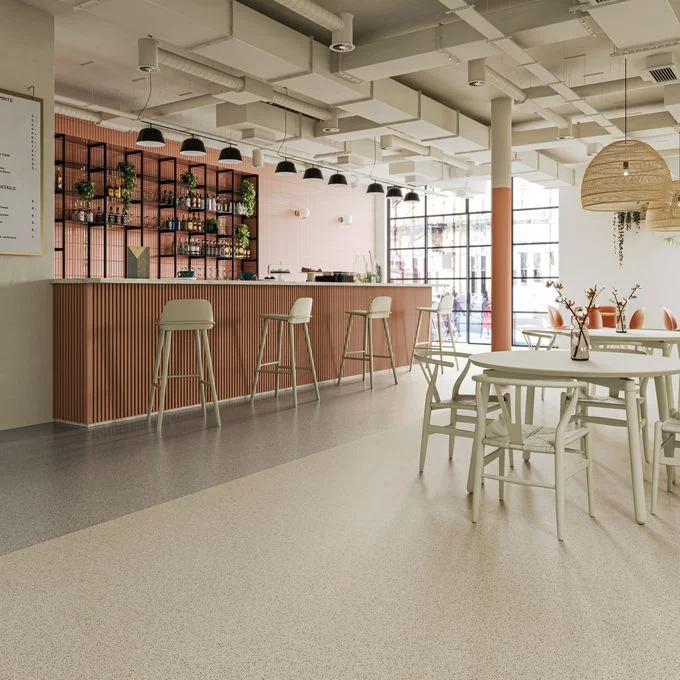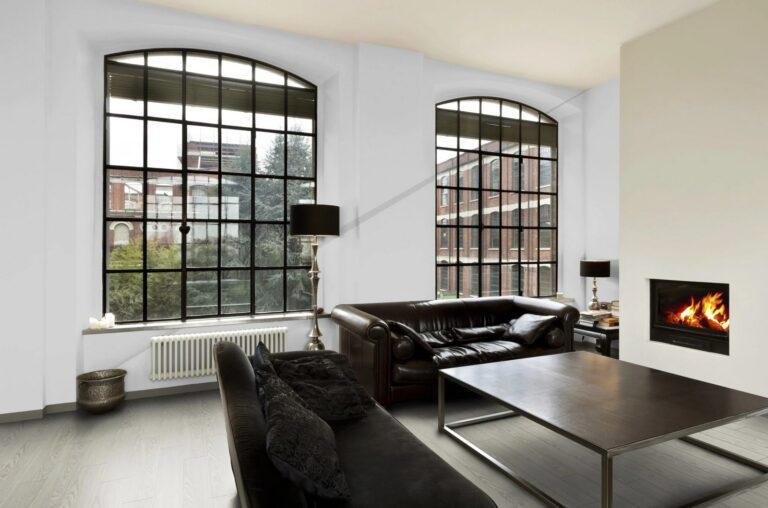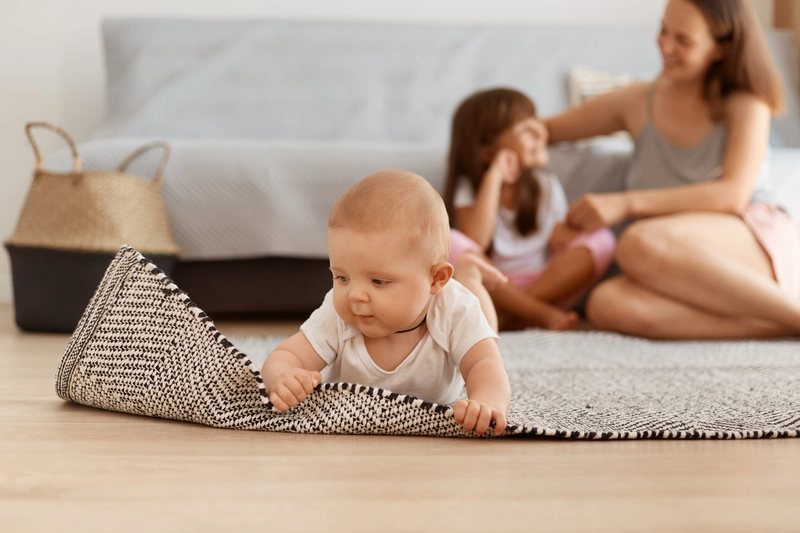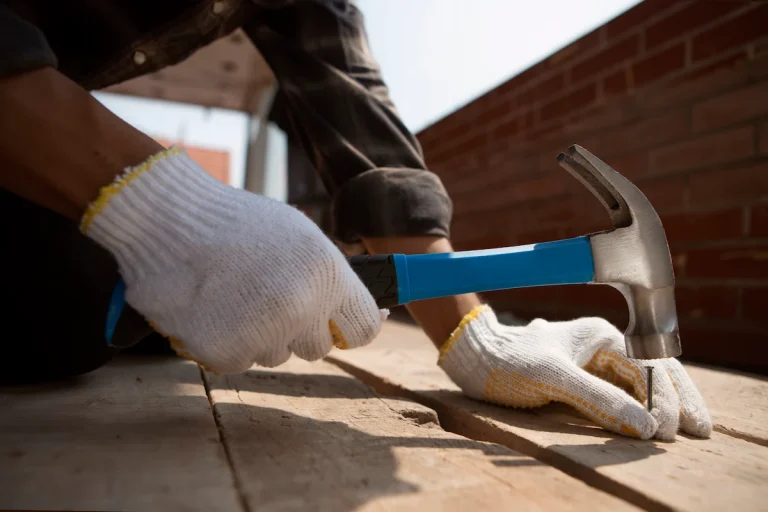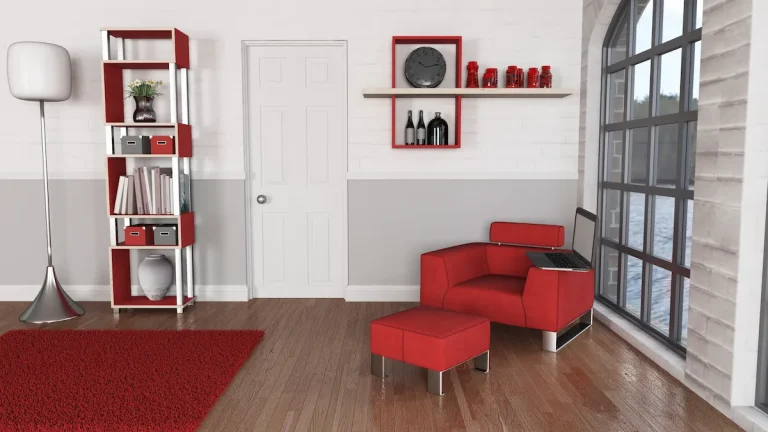Considering installing a wet room in your home but unsure about the best flooring option? We explore the benefits of wet room flooring and the suitable options available. Discussing ceramic tiles and rubber flooring, we analyse the pros and cons of each.
Find out why waterproof and non-slip flooring is essential for wet rooms, and get inspired by some creative wet room flooring ideas. Learn how to choose the perfect flooring for your needs!
The Importance of Choosing the Right Wet Room Flooring
Choosing the right flooring for a wet room is crucial because it needs to be waterproof, durable, and safe to walk on, even when wet.
One of the key considerations when selecting flooring for a wet room is its slip-resistant qualities. Slippery surfaces can pose a significant safety risk, especially in areas prone to moisture. It is equally important to ensure that the flooring is compatible with underfloor heating systems to maintain a comfortable temperature.
Materials like tiles, vinyl, and rubber are popular choices, known for their water-resistant properties and durability. These options not only enhance safety by providing a good grip but also help prevent potential damage caused by water exposure.
Flooring Recommendations for Wet Room
When selecting flooring for a wet room, it’s essential to consider materials that are waterproof, slip-resistant, and durable to withstand the moisture-rich environment.
1. Ceramic or Porcelain Tiles
Ceramic or porcelain tiles are popular choices for wet room flooring because they are robust, water-resistant, and available in a variety of colours and finishes.
In terms of durability, these tiles can withstand heavy foot traffic and are resistant to scratches and stains, making them an ideal solution for busy areas in the home.
In terms of design versatility, you can choose from a wide range of colours, patterns, and sizes to suit your aesthetic preferences and complement the overall decor of your space.
The ease of maintenance of ceramic or porcelain tiles is a major advantage, requiring simple regular cleaning to keep them looking fresh and vibrant.
2. Vinyl Flooring
Vinyl flooring is an excellent option for wet rooms as it is fully waterproof, easy to install, and available in many different designs and colours.
One of the advantages of vinyl wet room flooring is its remarkable comfort underfoot, providing a softer feel compared to some other hard flooring options. Vinyl flooring is known for its cost-effectiveness, making it a budget-friendly choice for homeowners looking to renovate their spaces without breaking the bank. The low maintenance required for vinyl flooring sets it apart from materials like hardwood or tile, saving both time and money in the long run. This versatile flooring option can convincingly mimic the look of stone or wood while offering a safe, non-slip surface, making it an ideal choice for areas where water exposure is common.

See product: Karndean Art Select Parquet Savannah Oak
3. Rubber Flooring
Rubber flooring is highly recommended for wet rooms due to its excellent slip-resistant properties and shock-absorbing qualities, making it a safe choice for areas prone to moisture.
One of the key benefits of rubber wet room flooring is its unmatched durability. It can withstand heavy foot traffic, frequent water exposure, and daily wear and tear without losing its structural integrity. This longevity makes it a cost-effective solution in the long run, as it requires minimal maintenance and replacement compared to other flooring options.
Plus its durability, rubber flooring is incredibly easy to clean. Its smooth surface allows for quick and hassle-free maintenance, requiring only regular sweeping and occasional mopping to keep it looking fresh and hygienic.
The cushioning effect of rubber flooring provides exceptional comfort underfoot, making it a popular choice for areas where people stand for extended periods. This added comfort can reduce fatigue and strain on joints, contributing to a healthier and more comfortable environment.
In terms of safety, rubber flooring excels in preventing slips and falls, especially in wet areas. Its textured surface enhances grip, reducing the risk of accidents and injuries. This quality makes it ideal for spaces like bathrooms, kitchens, and gyms where water spillage is common.
4. Stone Flooring
Stone flooring, such as marble or granite, offers a luxurious and timeless look for wet rooms, combining durability with natural beauty.
Marble and granite not only add sophistication to a space but also create a seamless flow from indoor to outdoor areas, making them versatile choices for various settings. The longevity of stone floors is unmatched, with proper care allowing them to last a lifetime. One must be vigilant about sealing to prevent water damage which can lead to mould and mildew issues.
5. Concrete Flooring
Concrete flooring provides a modern and minimalist aesthetic for wet rooms, offering a durable and waterproof solution that can be customised with various finishes and textures.
This versatile flooring option can be polished to a high sheen for a sleek and sophisticated look, stained in a variety of colours to complement any design scheme, or textured to add depth and character to the space. Its inherent strength and resilience make it a practical choice for high-moisture environments, such as bathrooms and kitchens, where spills and moisture are common. Its low maintenance requirements, when compared to other flooring materials, make it a cost-effective and time-saving solution for busy households.
Things to Consider when Choosing Wet Room Flooring
The best flooring for a wet room should combine waterproofing, slip resistance, and ease of maintenance to ensure safety and longevity in a moisture-rich environment.
a. Waterproof and Slip-resistant
Waterproof and slip-resistant flooring is essential in wet rooms to prevent water damage and reduce the risk of slips and falls.
In terms of choosing the right flooring material for wet areas like bathrooms and kitchens, the emphasis on waterproof and slip-resistant features cannot be overstated. Vinyl and textured tiles are popular choices due to their ability to withstand moisture while providing traction underfoot.
Vinyl flooring is a versatile option known for its water-resistant properties, making it ideal for wet rooms where splashes and spills are common occurrences. Its durability and ease of maintenance are additional advantages that make it a practical choice.
Textured tiles offer both style and safety, as their rough surface provides enhanced grip, minimising the chances of accidental slips and falls. These tiles often come with specific anti-slip ratings that indicate their level of traction, ensuring a secure surface even when wet.
Considering the potential hazards associated with wet floors, investing in flooring that prioritizes safety features like waterproofing and slip resistance is crucial not only for protection against water damage but also for the well-being of individuals using the space.
b. Easy to Clean and Maintain
Ease of cleaning and maintenance is a critical consideration for wet room flooring to ensure hygiene and prolong the lifespan of the materials.
When selecting flooring options for wet areas like bathrooms or kitchens, materials such as vinyl and ceramic tiles are popular choices due to their low maintenance and resistance to mould. Vinyl flooring is known for its water-resistant properties and easy upkeep, requiring simple sweeping and occasional mopping to stay clean. On the other hand, ceramic tiles are not only durable but also highly resistant to water, making them ideal for wet rooms.
To keep vinyl and ceramic tile floors in optimal condition, it is essential to adopt regular cleaning routines. For vinyl flooring, using a mild detergent and water solution to mop the surface can help remove dirt and stains effectively. For ceramic tiles, a mixture of water and vinegar is a natural and powerful cleaner that can combat mould and mildew growth.
c. Durable and Long-lasting
Durability and longevity are key factors when choosing flooring for a wet room, as it needs to withstand constant exposure to moisture and foot traffic.
When considering the flooring material, opting for stone or rubber can offer exceptional resilience against water damage and wear, ensuring a long-lasting solution.
These materials not only provide durability but can also add a touch of elegance to the space, enhancing the overall aesthetic appeal of the wet room.
To maximise the benefits of these durable materials, high-quality installation is crucial. Proper installation not only ensures a seamless finish but also helps enhance the flooring’s resistance to water penetration and structural damage over time.
Type of Flooring You Can Use for a Wet Room
There are several flooring options you can use in a wet room, each offering unique benefits in terms of waterproofing, safety, and design.
1. Traditional Wet Room Flooring
Traditional wet room flooring involves using waterproof materials like tiles or vinyl, along with proper drainage systems to ensure water flows efficiently.
One crucial element of traditional wet room flooring is the use of grout to seal the gaps between tiles, creating a watertight surface.
Implementing advanced waterproofing techniques such as tanking systems or waterproof membranes is essential to prevent water seepage into the underlying structure.
Professional installation is paramount in ensuring that these components are properly integrated to avoid potential leaks and the formation of unsightly mould.
2. Floating Floor System
A floating floor system is an innovative solution for wet rooms that involves installing flooring materials over a waterproof membrane, allowing for movement and preventing water damage.
One of the major benefits of a floating floor system is its ease of installation. With this method, the flooring materials are not attached to the subfloor, making it a quicker and simpler process. This allows for flexibility in design choices, as the flooring can easily be replaced or updated without disturbing the entire floor. In addition, the waterproof membrane provides an extra layer of protection, ensuring that the underlying structure remains intact even in the presence of moisture.
3. Waterproof Membrane System
A waterproof membrane system is designed to provide an additional layer of protection against water ingress in wet rooms, ensuring that the subfloor and walls remain dry.
These systems typically consist of waterproof membranes made from materials such as rubber, PVC, or polyethylene that are installed beneath the flooring or behind the walls.
The installation process involves carefully applying the membrane to create a barrier that prevents water from seeping through to the underlying surfaces. This effectively prevents leaks and helps to avoid dampness, which can lead to mould growth and structural damage.
When choosing compatible flooring materials for use with a waterproof membrane system, it is important to select options that are water-resistant and can withstand moisture exposure. Common choices include ceramic tiles, luxury vinyl planks, and epoxy coatings.
Wet Room Flooring Ideas
There are numerous creative flooring ideas for wet rooms that can enhance the space’s functionality and aesthetic appeal, from mosaic tiles to wood-look options.
1. Mosaic Tiles
Mosaic tiles are a popular choice for wet room flooring, offering a range of colours, patterns, and textures that can create a visually striking and slip-resistant surface.
Their versatility makes them suitable for both modern and traditional wet room designs, adding a touch of elegance and character to any bathroom space. With the ability to be arranged in intricate designs or used to highlight specific areas, mosaic tiles serve as a design element that can transform a dull room into a luxurious retreat.
2. Pebble Tiles
Pebble tiles add a natural, spa-like feel to a wet room, providing a unique texture and aesthetic that can enhance the overall ambience.
Their slip-resistant properties make them an ideal choice for areas prone to moisture, such as bathrooms or kitchens. The natural look of pebble tiles brings a touch of the outdoors inside, creating a soothing and tranquil environment.
It is crucial to properly seal and install pebble tiles to ensure they remain water-resistant and easy to clean. Sealing helps protect the tiles from moisture and stains, while proper installation guarantees a long-lasting and visually appealing finish.
3. Wood-look Tiles
Wood-look tiles offer the warm and inviting appearance of wood while providing the durability and water resistance needed for a wet room environment.
One of the primary advantages of wood-look tiles is their ability to withstand moisture, making them a perfect choice for areas prone to wetness such as bathrooms, kitchens, and even outdoor spaces. Unlike traditional wood, these tiles do not warp or swell when exposed to water, ensuring longevity and low maintenance.
Wood-look tiles are incredibly easy to clean and maintain, requiring simple regular sweeping and mopping to keep them looking pristine. This makes them a hassle-free option for busy households looking for a beautiful yet practical flooring solution.
4. Bold and Colourful Patterns
Bold and colourful patterns can transform a wet room into a vibrant and dynamic space, adding personality and style to the flooring.
Geometric designs are a popular choice for those looking to create a modern and eye-catching aesthetic in their wet room. The clean lines and structured shapes can bring a sense of order and sophistication to the space. Coupled with vibrant colour schemes, such as bold blues, greens, or yellows, these patterns can make a bold statement that reflects the homeowner’s personality and taste.
How to Choose the Right Wet Room Flooring
Choosing the right flooring for your wet room involves considering factors such as waterproofing, aesthetics, maintenance, and durability to ensure it meets your specific needs and preferences.
a. Consider the Level of Waterproofing
The level of waterproofing is a crucial factor to consider when choosing wet room flooring, as it directly impacts the durability and usability of the area.
Waterproofing plays a vital role in protecting the structural integrity of the flooring by preventing water damage and mould growth.
Materials like vinyl and ceramic tiles are popular choices for wet room flooring due to their inherent water-resistant properties.
Proper installation and meticulous sealing are key to enhancing waterproofing effectiveness, ensuring that no moisture seeps through and causes potential issues in the future.
By investing in high-quality waterproof materials and expert installation, you can create a long-lasting and functional wet room that stands the test of time.
b. Think About the Aesthetics
Aesthetics play a significant role in choosing wet room flooring, as the style, colour, and texture can greatly influence the overall look and feel of the space.
When considering flooring options for your wet room, it’s essential to think about how each choice will complement the design scheme you have in mind. Mosaic tiles can add a touch of elegance and visual interest, creating a stunning focal point in the room. On the other hand, wood-look tiles bring warmth and natural beauty to the space, creating a cosy and inviting atmosphere.
By selecting a cohesive design that resonates with your personal taste and aligns with the overall theme of your bathroom, you can achieve a harmonious and visually appealing look that enhances the ambience of your wet room.
c. Consider the Maintenance and Durability
Maintenance and durability are essential considerations when choosing wet room flooring, as the materials must withstand constant exposure to moisture and remain easy to clean.
In terms of wet room environments, the importance of having flooring that can endure water, humidity, and daily wear and tear cannot be overstated. This is where materials like rubber and vinyl truly shine, offering a perfect blend of resilience and low maintenance.
Both rubber and vinyl flooring options are designed to be impervious to water, making them ideal choices for wet rooms where spills and splashes are common. Their non-porous surfaces make cleanup a breeze, preventing moisture or bacteria from seeping into the material.
With these durable and easy-to-clean flooring options, homeowners can enjoy peace of mind knowing that their wet room remains hygienic and functional for years to come.
In conclusion, choosing the right flooring for your wet room, like your bathroom, is crucial for both style and functionality. At TEKA Flooring, we offer a diverse selection of waterproof and slip-resistant options, ensuring you find the perfect fit for your space.
Visit TEKA Flooring today to browse our collection and transform your wet room into a safe and stylish haven.
Read also:


























